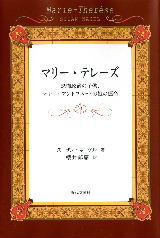This opera was composed by Rossini
for the coronation of Charles X, King of France. The
premiere was performed on 19 June 1825, attended by
the royal family. The music is buoyant like other
operas of Rossini. Charles X, the youngest brother of
Louis XVI, was a good companion of Marie Antoinette
when he was young. But after the Revolution broke
out, he went into exile and did her much harm
stirring up the counter-revolution. His eldest son,
Duc d'Angoulême, married Madame Royal (Marie
Antoinette's daughter).
Though it's the honor to have Rossini composed the opera, Charles X's halcyon
days didn't last for long and forced to defect to other countries because
he was an ultra-royalist. Needless to say, Madame Royal got involved in
his misfortune. When I translated my second book, I felt strongly her doom
the insurrection, confinement, the execution of her family, the enigma
of his brother's death, unhappy married life, exilewhich was as terrible
as her mother's.
The scene of this opera represents the spa hotel,
Golden Lily where various European travellers stay
going to see the coronation of Charles X at Reims.
The heroin is Corinna, a Roman poetess. Other
characters are a fashion mania French countess, a
womaniser French chevalier, a Russian general, an
English colonel, a German major, a grandee of Spain
and so on. While seduction, jealousy and
reconciliation unfold, there is a tragedy that the
stagecoach carrying wardrobe of the French countess
was overturned and she laments it, though later she
overjoys at her fashionable hat that was found. In
the end the group finds that no horse is available
and they can't go to Reims, but knowing forthcoming
celebrations at Paris, they give a party and make
merry.
For an entertainment each one sings a national song.
The German sings Haydn's hymn for the Emperor, the
Polish lady a Polonaise, the English gGod Save the
Kingh(How interesting to listen to an Italian
version!), the Frenchmen gCharmante Gabrielleh(Henri
IV's mistress, Gabrielle d'Estrées), the owner
of the hotel yodel. The grandee of Spain praises Duc
d'Angoulême who pacified Spain in his song. The
last is Corinna who improvises and praises Carles X
to the skies, joined by chorus of all.
@
@


